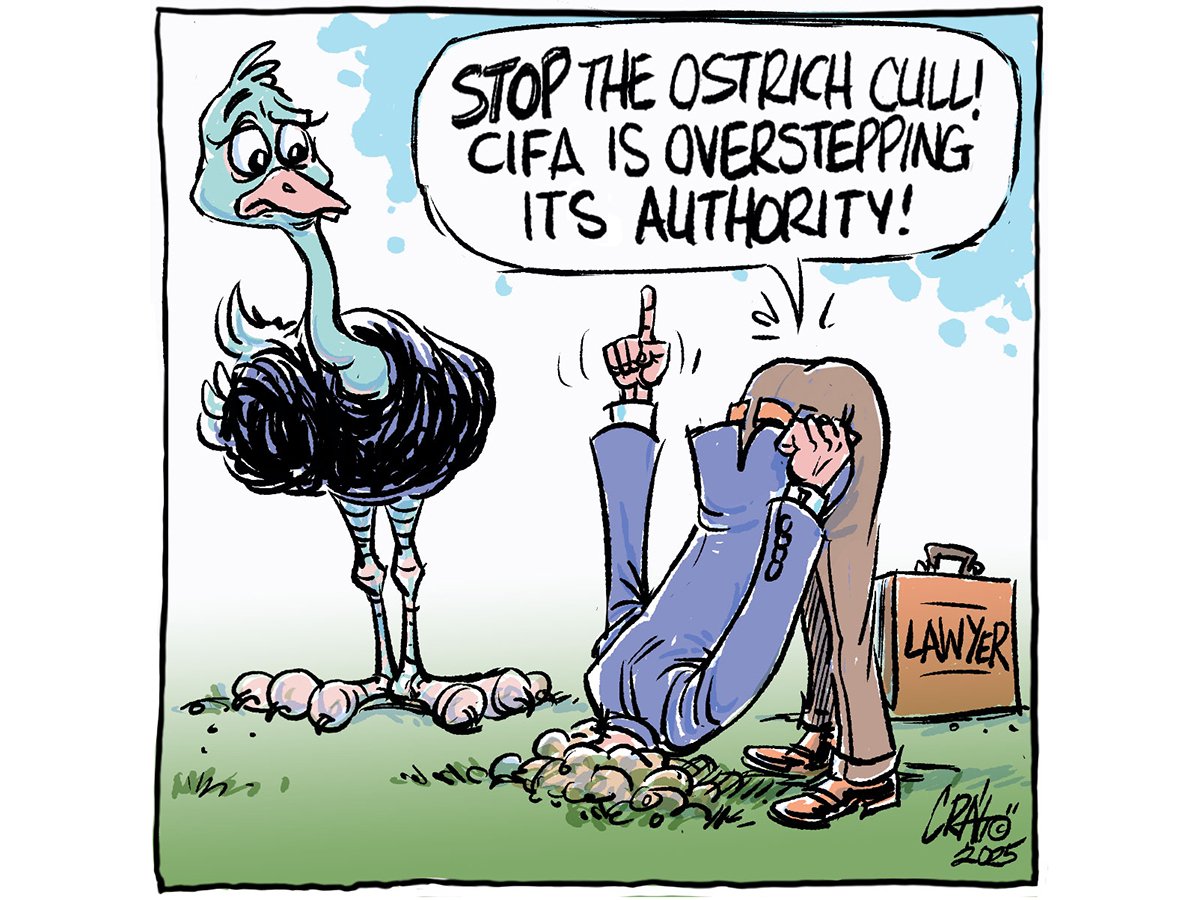A whiff of better times has investors looking forward to an economic
recovery.
The shallow valley in the economy in 2001 foretells a similarly shallow
initial upturn, but that won’t prevent the usual directional move by
stocks and bonds in the early stages of a recovery.
Cheap borrowing costs have already given a huge boost to housing and
autos.
The factory sector has yet to turn the corner. However, since American
manufacturers have kept assembly lines running well below sales to
Read Also

The Canadian Food Inspection Agency’s animal health efforts require producer support
Livestock producers should be concerned by how an ostrich farm is using crowd funding to help it defy a Canadian Food Inspection Agency order to destroy more than 300 birds.
clear out unsold goods, merely bringing output back in line with sales
to keep inventories from declining further will provide momentum in
production.
As of March 1, there were some promising signs. The Institute of Supply
Management, formerly known as the National Association of Purchasing
Managers, showed U.S. manufacturing activity rose in February for the
first time in 18 months.
Although retail spending will slow after an unsustainable late-2001
shopping spree, the coming turn in manufacturing should underpin a
nearly two percent real growth rate in the United States in the first
half of 2002.
Canada could lag a bit, given that corporate America was much more
aggressive in shedding idle workers and inventories as sales dropped
off in 2001.
However, an increase in U.S. orders will fuel a rebound in Canadian
exports, the weak link in Canada’s economy last year.
Facing no inflation risks for the next few quarters, both the Bank of
Canada and the U.S. Federal Reserve will keep short-term interest rates
at current multi-decade lows, as normally happens in the year following
a recession year.
By the last half of 2002, sustained low rates and a better job market
should underpin a more durable recovery in consumer spending.
A corporate earnings rebound on better volumes and cost-cutting efforts
should also encourage a modest climb from the void into which business
capital spending has fallen.
Together, that should fuel a three to four percent second-half North
American economic growth rate and an end to increasing unemployment
rates, allowing for a modest interest rate hike in both countries in
the last quarter of 2002.
Economic rebounds are generally bad news for government bonds, since
investors fear a return to higher interest rates as central banks
provide less stimulus to growth.
To a significant extent, the bond market has already anticipated the
potential for higher short-term yields, with two-year and five-year
bonds providing an ample premium over short-term rates.
That should cushion the typical blow to bond prices as economic growth
picks up this year.
The flow of funds out of low-yielding, fixed-income assets into a
recovering equity market, and the anticipation of higher short-term
rates in 2003, should be enough to push 10-year Government of Canada
bonds to roughly 5.75 percent over the next four quarters.
As bond prices fall, equities will outperform as an asset class.
Investors will have to be patient when looking for earning gains, with
year-over-year improvements not expected in many sectors until the
second half of this year.
As a result, stocks don’t look cheap based on their likely earnings
yields over the next four quarters, even relative to bond yields.
But at this weak stage in the business cycle, when profits are well off
their medium-term potential, it’s typical for stocks to look expensive
on a near-term earnings basis. A similarly “overvalued” market rallied
in 1991 amidst an unusually lukewarm first year for an economic
recovery.
Ian Morrison is a financial consultant with Wood Gundy Private Client
Investments in Calgary and is licensed to sell insurance products. His
views do not necessarily reflect those of CIBC World Markets Inc. or
The Western Producer. Morrison can be reached at 800-332-1407 or by
e-mail at ian.morrison@cibc.ca.














